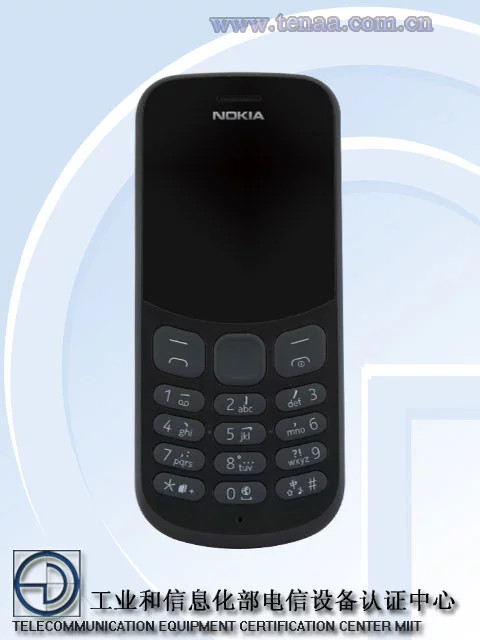HMD Global, the Finnish startup company who acquired the rights from Microsoft to sell Nokia phones, had made a decent comeback a few months ago. The first batch of Nokia phones after the comeback of the iconic brand has been impressive so far. Nokia released four phones this year- Nokia 6, Nokia 5, Nokia 3 and the Nokia 3310 (review). While the first three devices are smartphones, the last one is a feature phone.

The Nokia 3310 succeeds the 2000's Nokia 3310, but it isn't as sturdy as the original Nokia 3310. The new Nokia 3310 is up for sale in some countries like India, Europe, UK, etc. And now, it's revealed that HMD is working on yet another Nokia feature phone with model number- TA-1017.
The feature phone is spotted on the Chinese regulatory site TENAA, which also revealed the design and key specifications of the phone. The Nokia TA-1017 didn't get a name yet. The device looks like yet another feature phone with a small display, followed by the keypad. The design of the phone looks more like the Nokia 110 feature phone released some years ago.

And yes, this feature phone comes with a rear facing camera of 2MP. Unlike the Nokia 3310, this upcoming feature phone lacks LED flash, and a loudspeaker replaces it, placed below the rear camera module, followed by the Nokia branding.
Furthermore, the listing shows that the phone will run the Nokia S30+ software, same as the Nokia 3310 and comes with only 2G connectivity support. Most likely, HMD will launch another variant of the feature phone with 3G or 4G connectivity because the only letdown of the Nokia 3310 is the lack of 3G/4G connectivity option.

The device is slightly on the thicker side and will have a 3.5mm headphone jack and standard micro-USB port. As of now, it's unknown when HMD is looking to unveil the feature phone. This is not a surprising note because HMD already confirmed that they would launch a slew of Nokia feature phones by the end of the year. But they should come with at least 3G connectivity option because we're entering into the 5G era and most of the countries have already removed the spectrum required for 2G.















